When the HS2 railway was first announced, a lot of people were understandably thrilled. The railway is supposed to link Britain’s two largest cities, London and Birmingham, via a new, high-speed railway, and then extend even further.
But a lot of people were excited for a completely different reason: archaeology.
Before engineers can build the tracks, stations, bridges, and tunnels, an archaeological survey must be carried out. This is the largest archaeology program ever undertaken in the UK, and it’s already made some striking findings. Here are just some of them.
An exquisite Roman figure
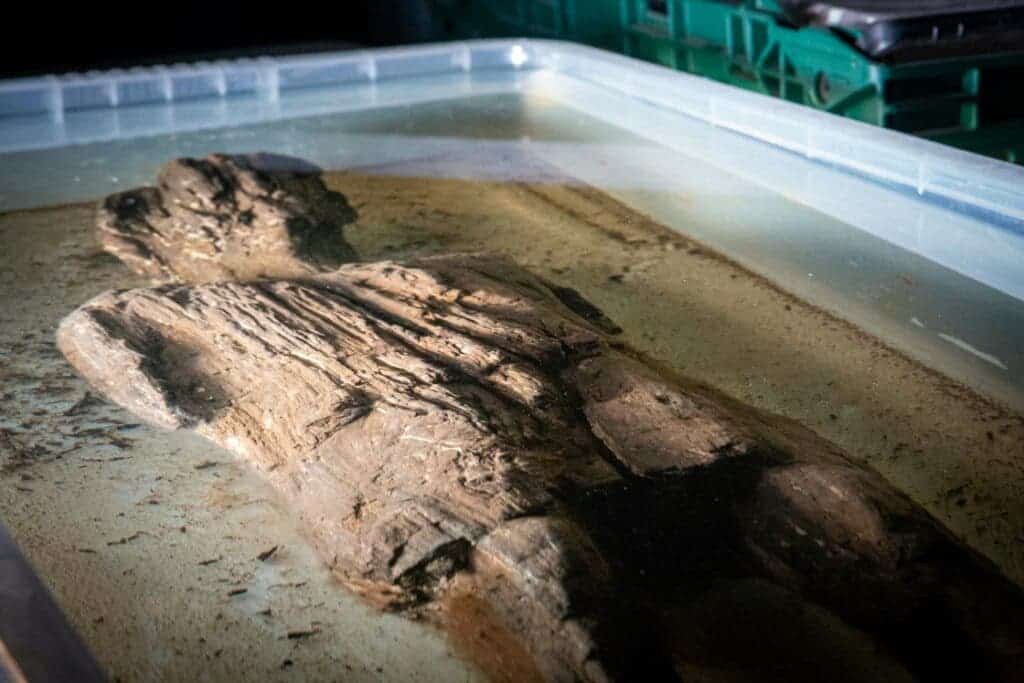
It’s not common for archaeologists to find wooden artifacts, especially ones this well-conserved. So when the HS2 team found an extremely rare, carved wooden figure from the early Roman era, they were understandably thrilled.
Wood doesn’t preserve particularly well, especially when we’re talking about something that’s 2,000 years old. But in this case, the lack of oxygen in the clay layer where it was found prevented rotting and ensured preservation. Given the style of the human-like carving, and the tunic-like clothing the person appears to be wearing, the sculpture seems to date from the first century AD. Shards of pottery from 43-70 AD were also discovered in the ditch, which seems to support this idea.
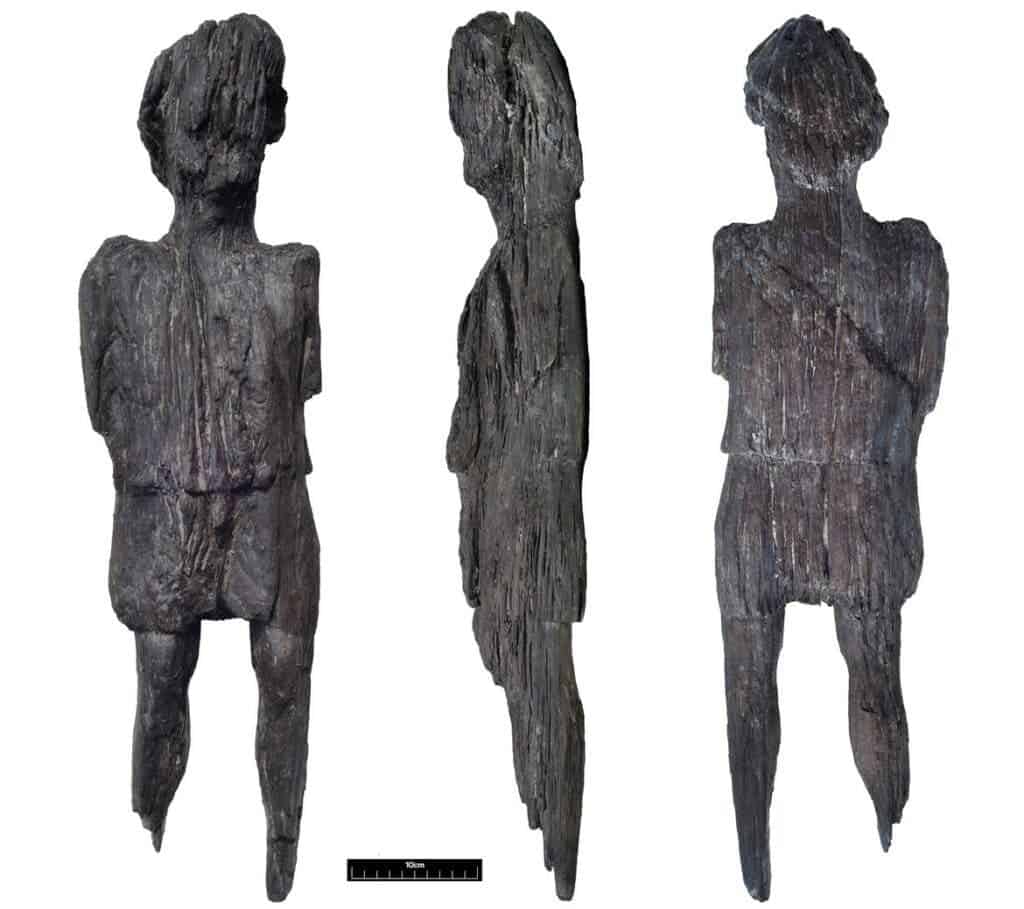
Researchers aren’t really sure what the statue would have been for. Rare instances of wooden carvings offered to the gods had been found, and it’s unlikely that the statue was just a random art project. Still, it’s unclear who the statue represents and what its purpose is.
“The amazing discovery of this wooden figure was totally unexpected, and the team did a great job of recovering it intact. The preservation of details carved into the wood such as the hair and tunic really start to bring the individual depicted to life. Not only is the survival of a wooden figure like this extremely rare for the Roman period in Britain, but it also raises new questions about this site, who does the wooden figure represent, what was it used for and why was it significant to the people living in this part of Buckinghamshire during the 1st century AD?” said Iain Williamson, Archaeologist for Fusion JV.
The secrets of a medieval church
When they found the remains of a medieval church northwest of London, archaeologists weren’t expecting much. But what they found was very much unusual.

The church was built in 1080 and was renovated several times, in the 13th, 14th, and 17th centuries, before being abandoned in 1880 and demolished in 1966. Its ruins became overgrown with vegetation. But unbeknownst to the archaeologists, the church lay on top of a Roman mausoleum.
In the final stages of the excavation, archaeologists were working on a circular ditch which they assumed was the foundation of a tower. But when they dug down, they started finding Roman artifacts.
More and more Roman artifacts emerged, including a few stunning statues and an incredibly well-preserved hexagonal glass Roman jug. Despite being in the ground for well over 1,000 years, the glass jug had large pieces still intact.

The discovery was “utterly astounding”, according to Rachel Wood, the lead archaeologist at the site in Stoke Mandeville, Buckinghamshire. “They’re really rare finds in the UK,” she said.
“The statues are exceptionally well preserved, and you really get an impression of the people they depict – literally looking into the faces of the past is a unique experience.”
A stash of 300 Iron Age coins (or potins)
The ‘Hillingdon Hoard’, as the find is now called, dates back to the 1st century BC — a time called the Iron Age, before the Romans arrived in Britain. The potins (coins made from a silver-like alloy) were struck in Marseilles, France, some 2,175 years ago. They bear the head of the Greek God Apollo on one side and a charging bull on the other side.
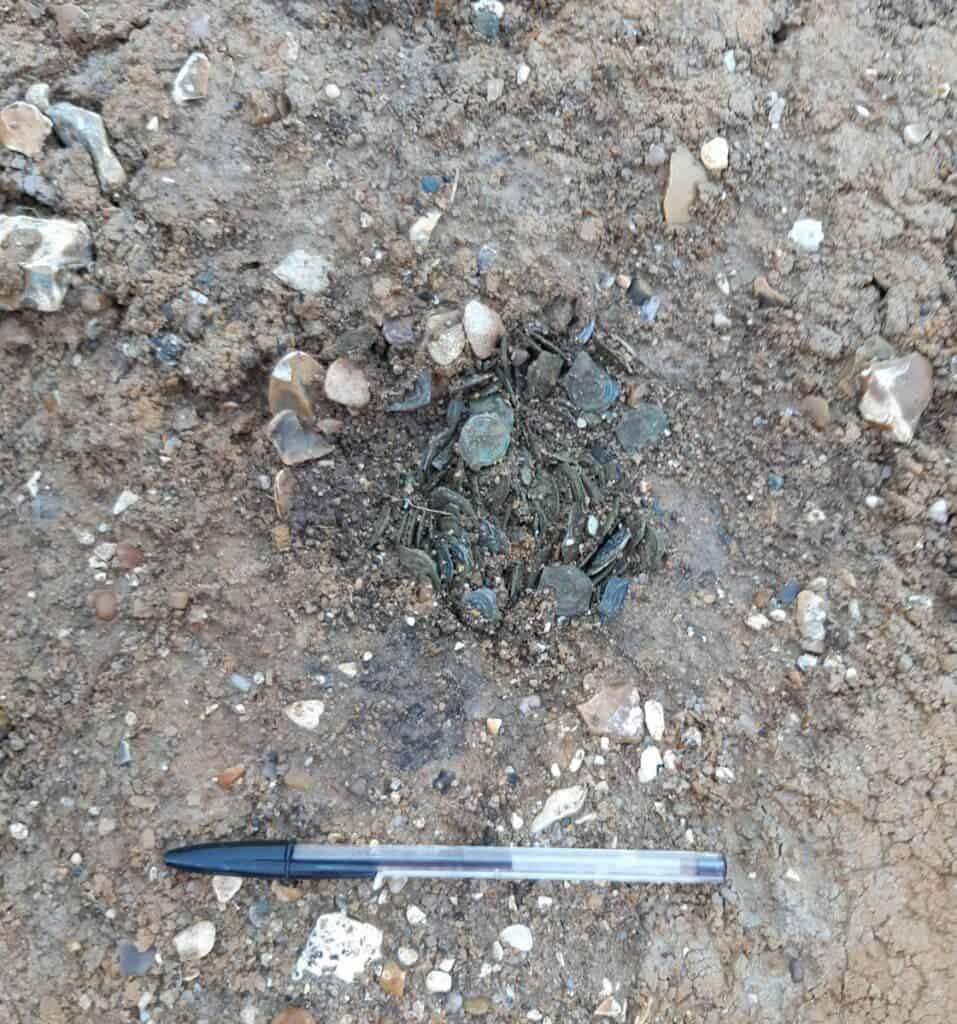
It’s not even clear what the potins would have been used for, because at the time, bartering (the exchange of goods and services without currency) was the main form of commerce in Britain. Instead, archaeologists suspect that they may have been used as a boundary for a property or as an offering to the gods — or maybe, as an emergency stash in case of an emergency.
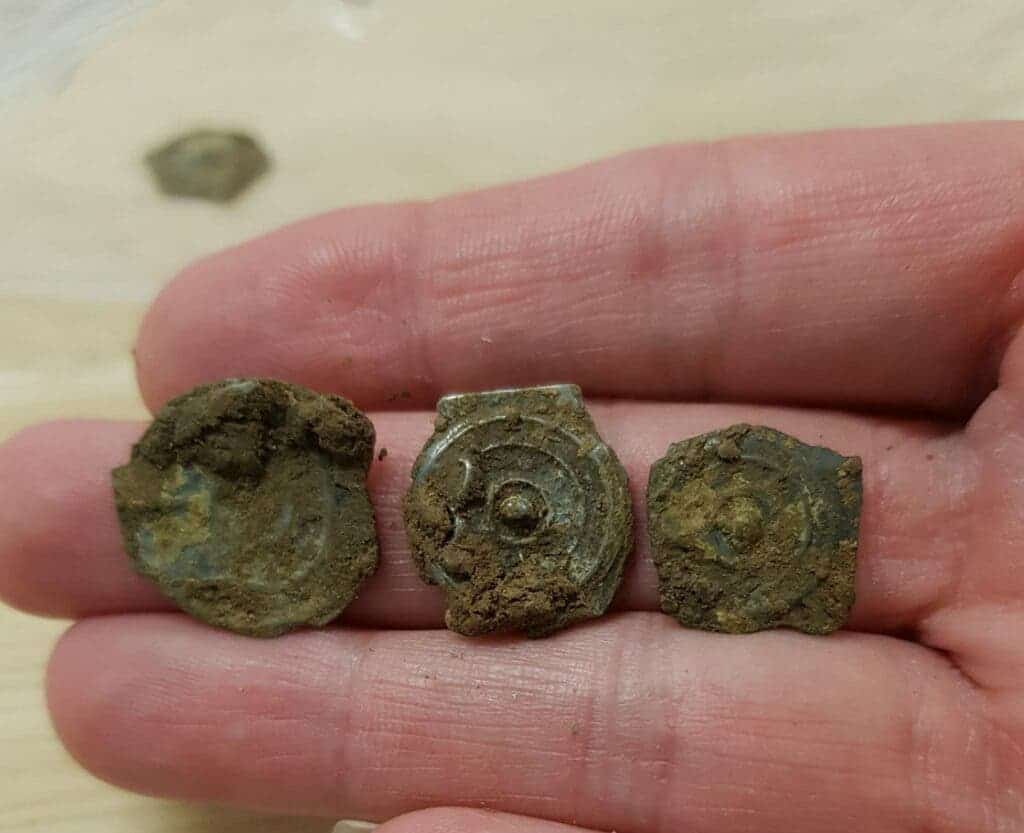
The potins were taken to the Birmingham Museum and Art Gallery where they have been cleaned and preserved.
A Roman trading settlement
If you think we’re pretty much done with discovering Roman cities, well, think again. A Roman trading town, and a rich one by the look of it, was also discovered just half a meter below the surface along the route of the new railway.
The town’s inhabitants adorned themselves with jewelry, ate from fine pottery, played games, and had intricate religious statues — showing all the hallmarks of being prosperous.
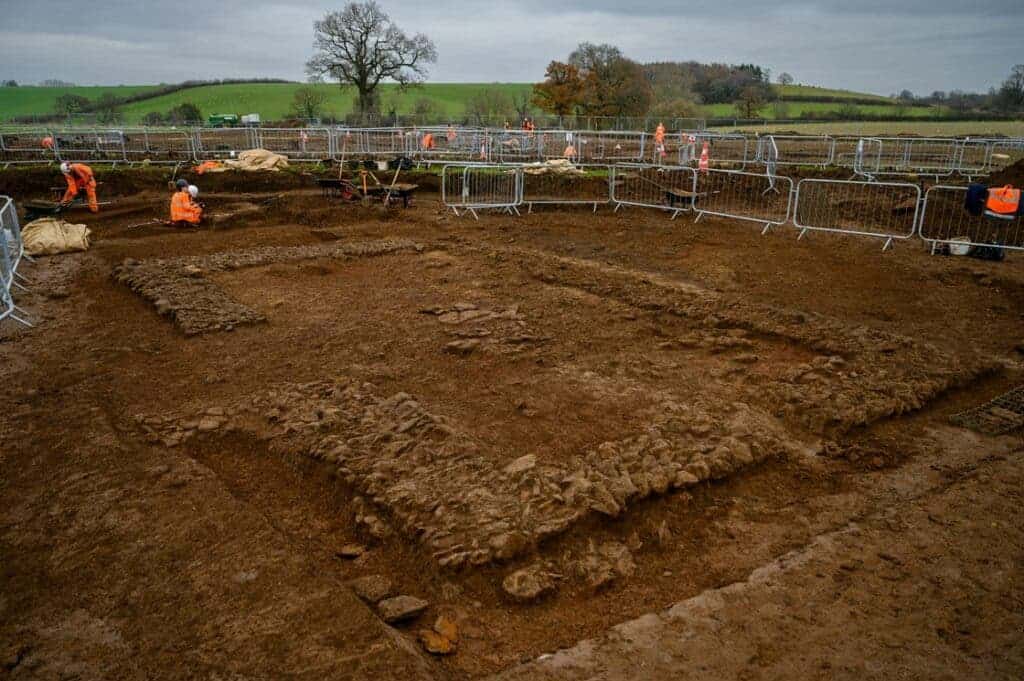

The site includes several domestic and industrial buildings, a 10-meter-wide road, wells, and coins, as well as objects relating to the everyday life of the Romans that inhabited it.
Site manager James West said it was “extraordinary and tells us so much about the people who lived here”, calling it one of the “most impressive sites” the Museum of London Archaeology (MOLA) had discovered working on HS2. “The site really does have the potential to transform our understanding of the Roman landscape in the region and beyond,” he added.
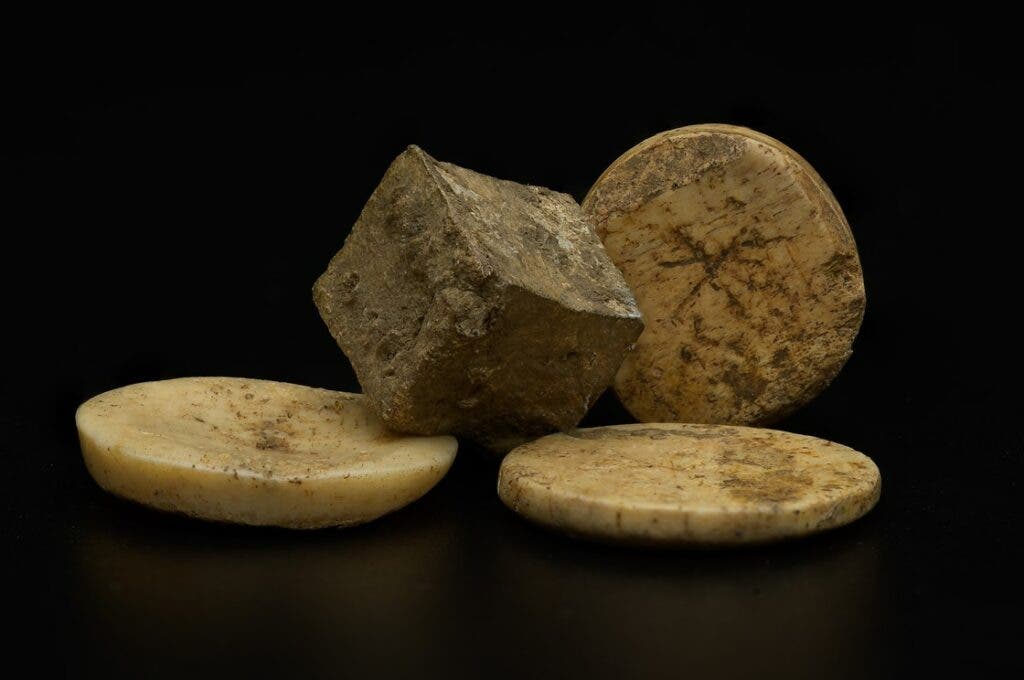
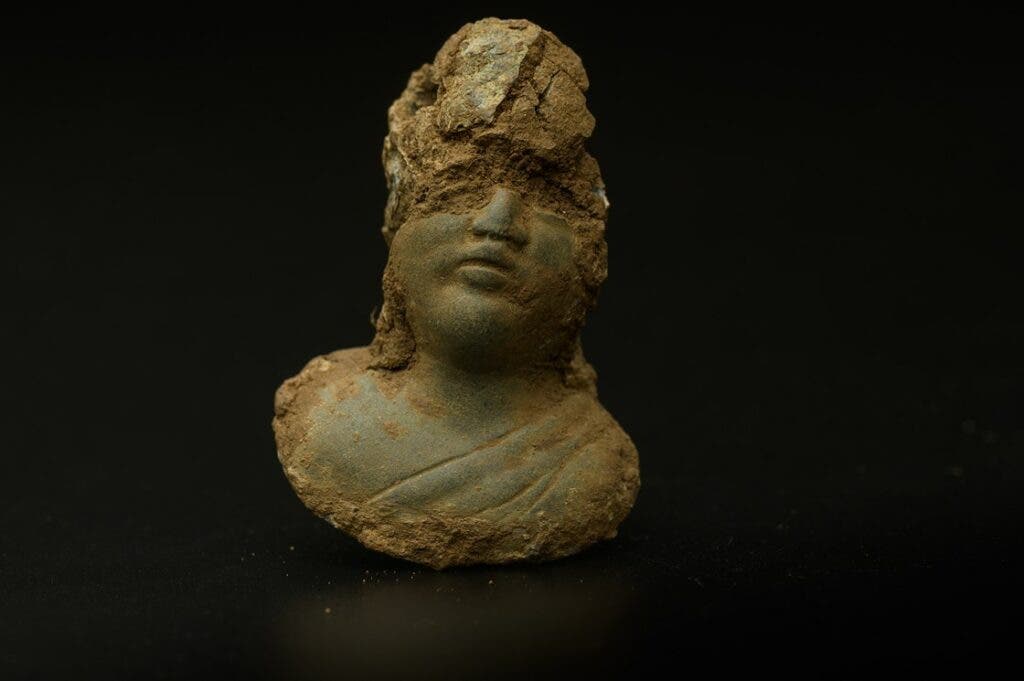
The main road was the Roman equivalent of a high-traffic highway, and this is one of the key indicators that this was a trading hub. Carts would have come to load and unload merchandise, using the wide road to full effect. At its height, the town would have had hundreds of inhabitants, most of whom would have been well-off. But archaeologists also found half a set of shackles, hinting at either crime or slavery.

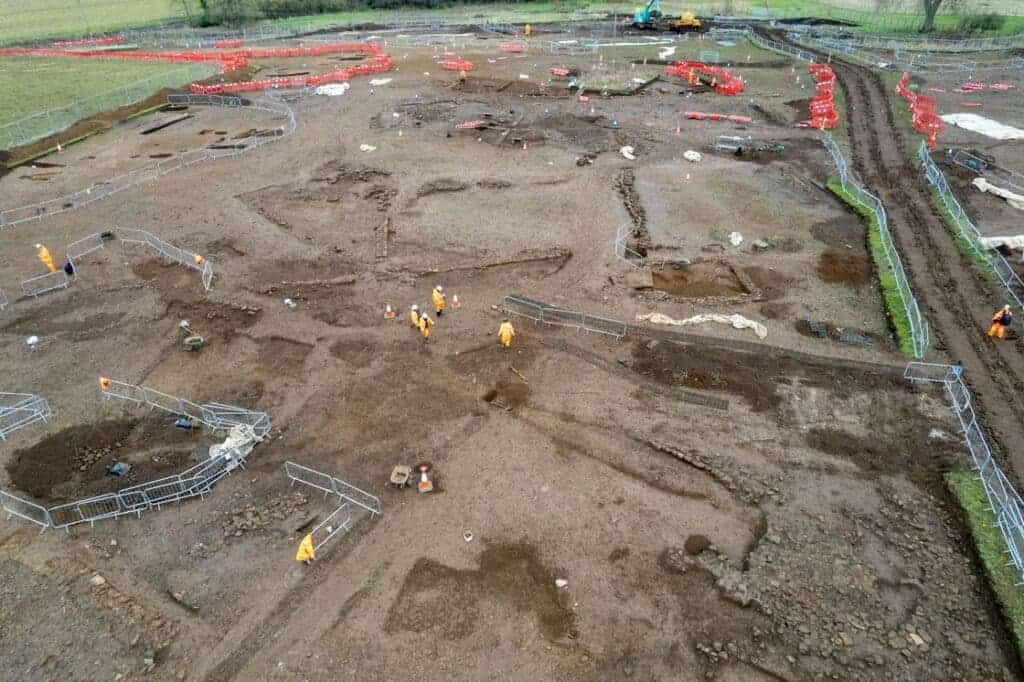
Witching marks
Remember the medieval church we mentioned earlier? HS2 archaeologists also uncovered several medieval graffiti and “witching” marks at the site. Because after all, why not build a railway on top of a church on top of a mausoleum where there are signs meant to ward off evil?
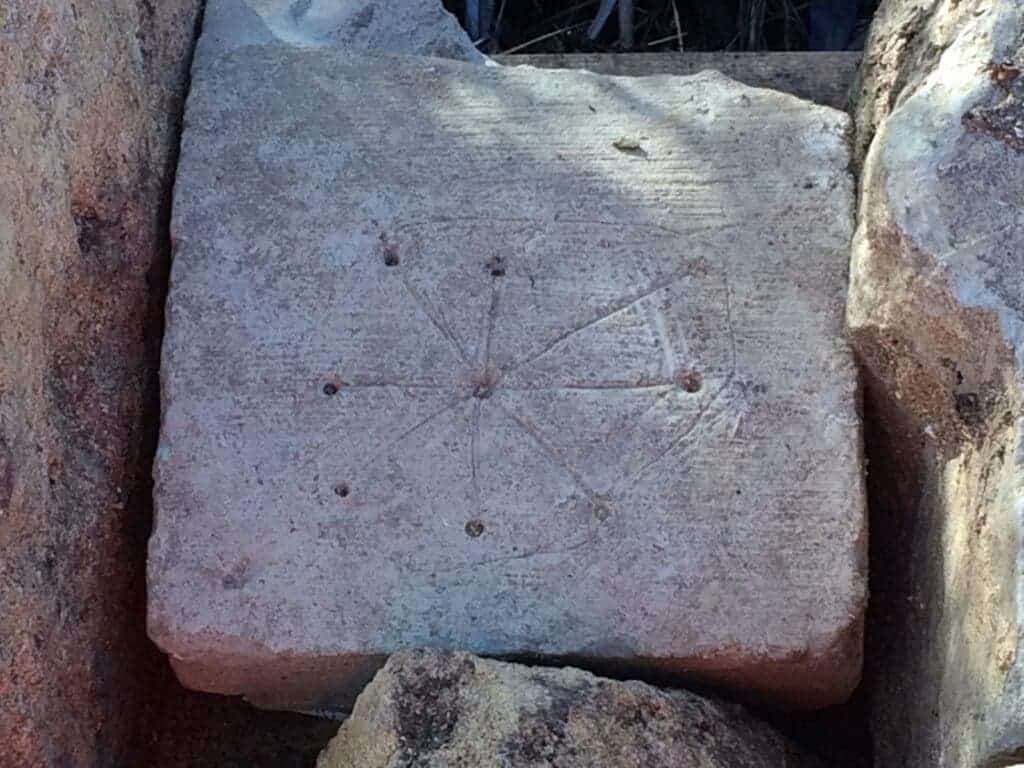
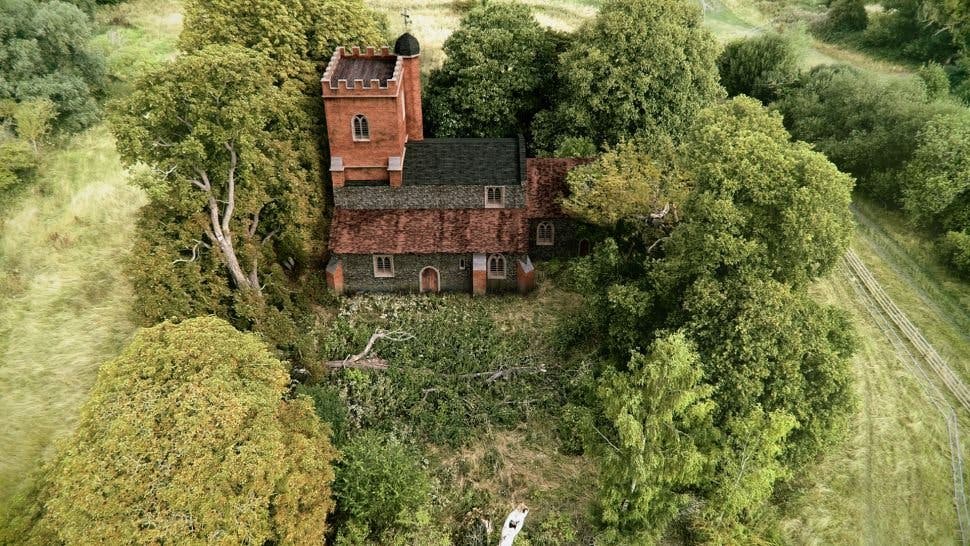
It’s not clear if the inscriptions were there to ward off evil spirits or used as sundials, but similar witch markings have been found at several medieval sites across the UK — including at a site called Creswell Crags, a limestone gorge and cave complex that has been inhabited on and off since the last ice age.
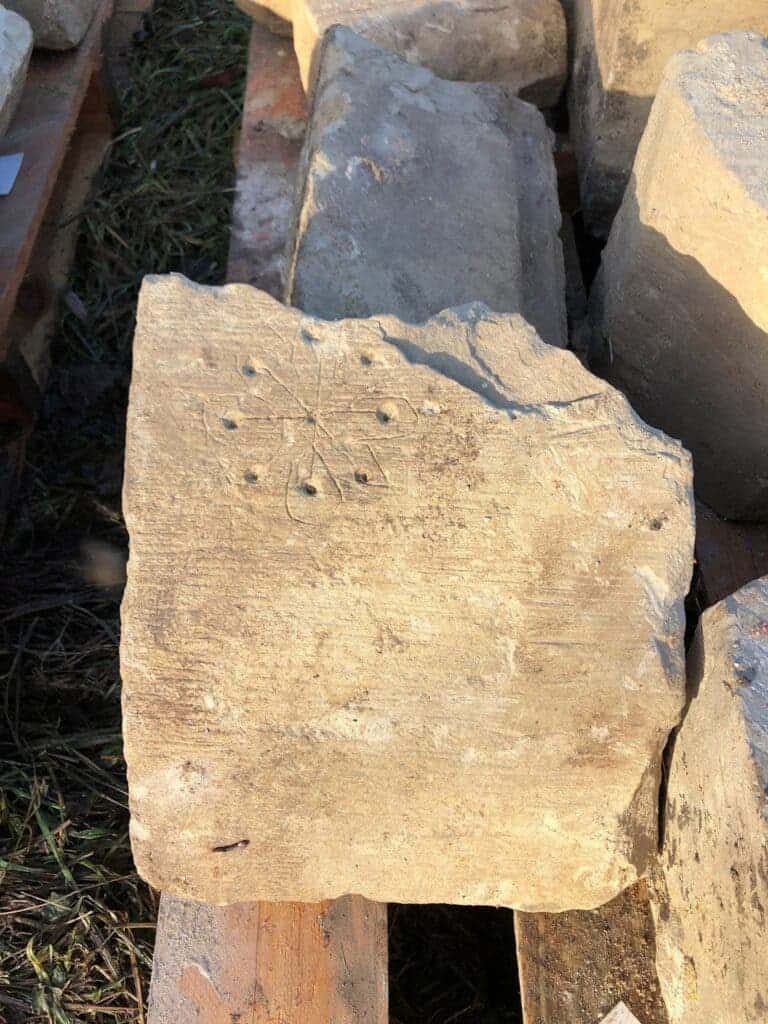
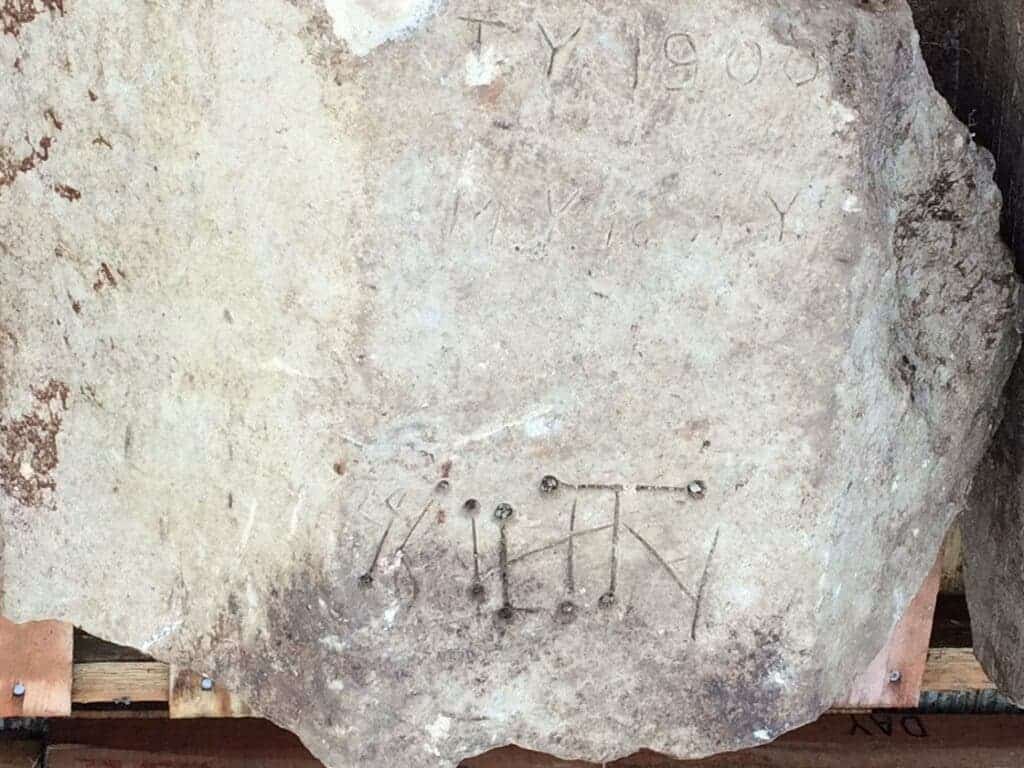
Burial grounds
Speaking of creepy things, it wouldn’t be an archaeology project without finding a grave or two — or a few hundred. For starters, HS2 archaeologists discovered a 5th and 6th-century Anglo-Saxon burial site. Almost three-quarters of the graves contained high-quality goods, which suggests that the site was the final resting place of a wealthy Anglo-Saxon community.
Some of the items uncovered could have been imported from across Europe, and could help researchers figure out more about what life was like for these communities. This period is generally called “the Dark Age”.
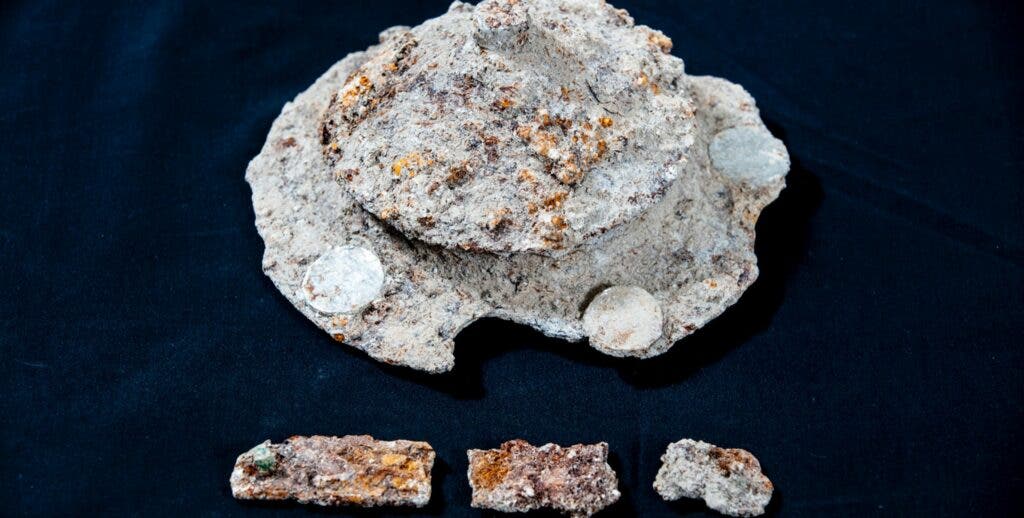
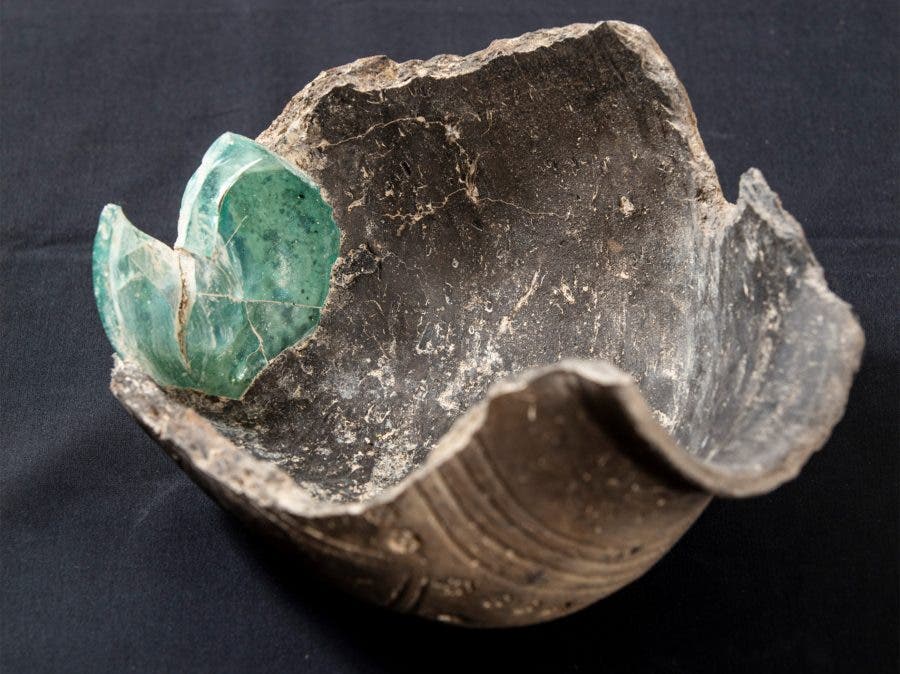
Several other graves were discovered at various sites along the railway route, and analysis of the graves and the skeletons themselves will help scientists piece together new information about life in Roman, Anglo-Saxon, and medieval Britain.
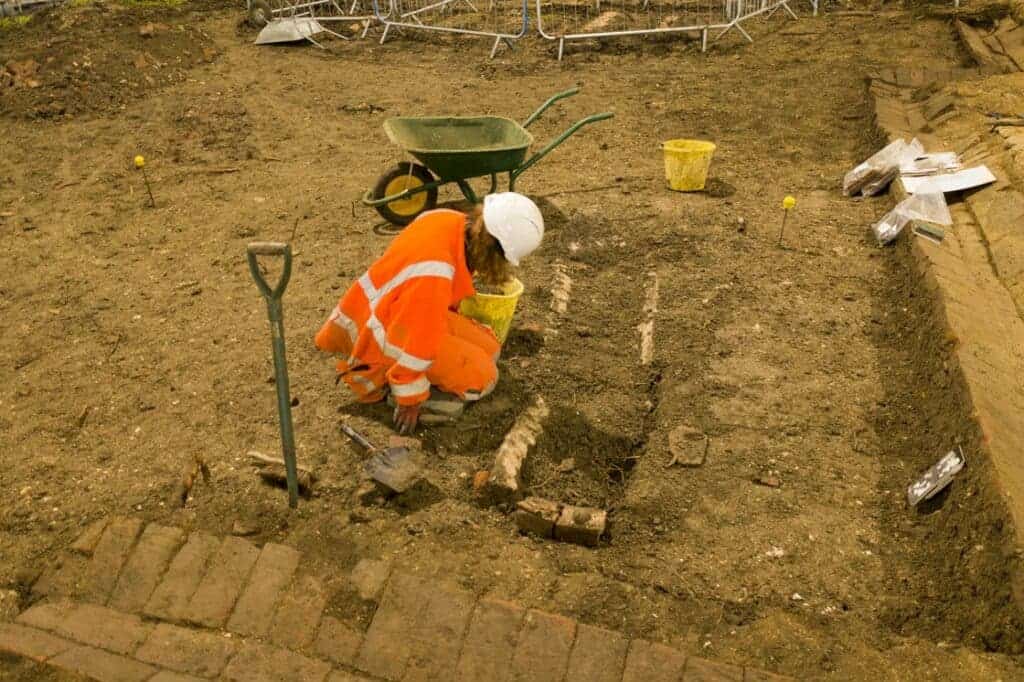

A massive moat and garden
Archaeology isn’t always about digging down. Sometimes, it helps to have a bit of a bird’s eye perspective. During investigations, the remains of a site called Coleshill Manor and the surrounding octagonal moat were picked up by aerial photography. Upon closer archaeological investigations, an impressive garden from 1600 was also discovered.
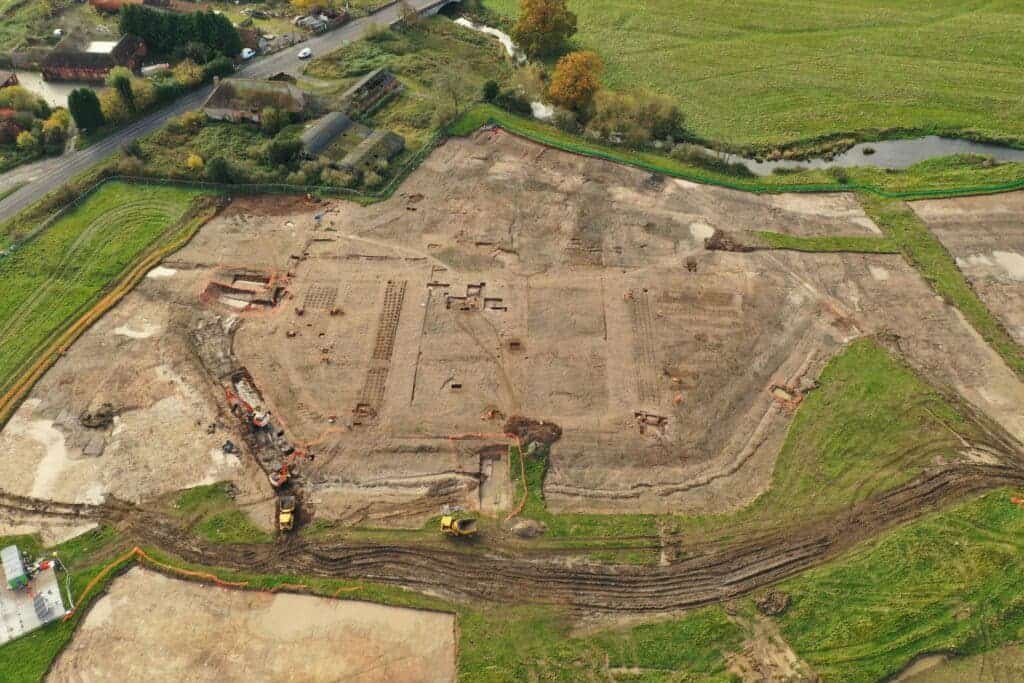
The gardens were entirely unknown before, and they’re remarkably well-preserved. Archaeologists believe they were built by Sir Robert Digby, an English courtier who is known to have owned an estate in the area. Digby married an Irish heiress and is said to have built a modern-style house with huge gardens to show off his wealth and status.
Coleshill is a historic market town on the east side of Birmingham, and this manor and estate would have rivaled any of the most impressive estates in Britain — which is why it’s so surprising that this was all but forgotten. Dr. Paul Stamper, a specialist in English gardens and landscape history said:
“This is one of the most exciting Elizabethan gardens that’s ever been discovered in this country. The scale of preservation at this site is really exceptional and is adding considerably to our knowledge of English gardens around 1600. There have only been three or four investigations of gardens of this scale over the last 30 years, including Hampton Court, Kirby in Northamptonshire and Kenilworth Castle, but this one was entirely unknown.”
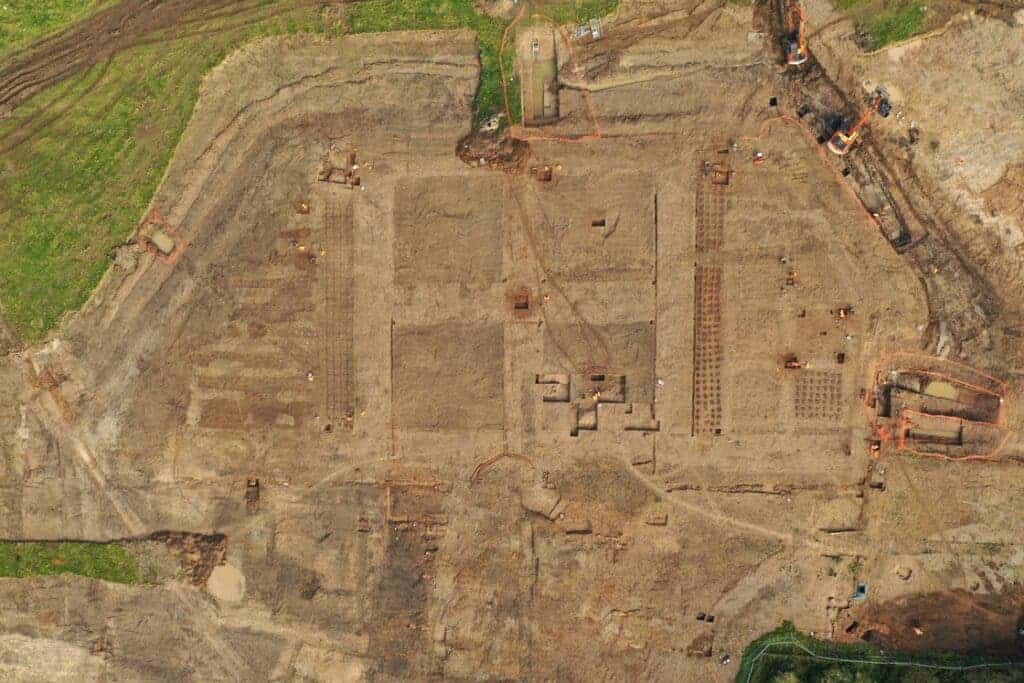

These are just some of the many findings made along the HS2 route. Think about it: all this archaeology, and much more, uncovered working on a single segment connecting two cities 200 km (125 miles) away.
What more awaits discovery in Britain? What more awaits discovery in other places? There’s so much more history just waiting to be discovered. Who even knows what lies beneath our feet?
This article originally appeared in September 2022 and was updated with new information.
